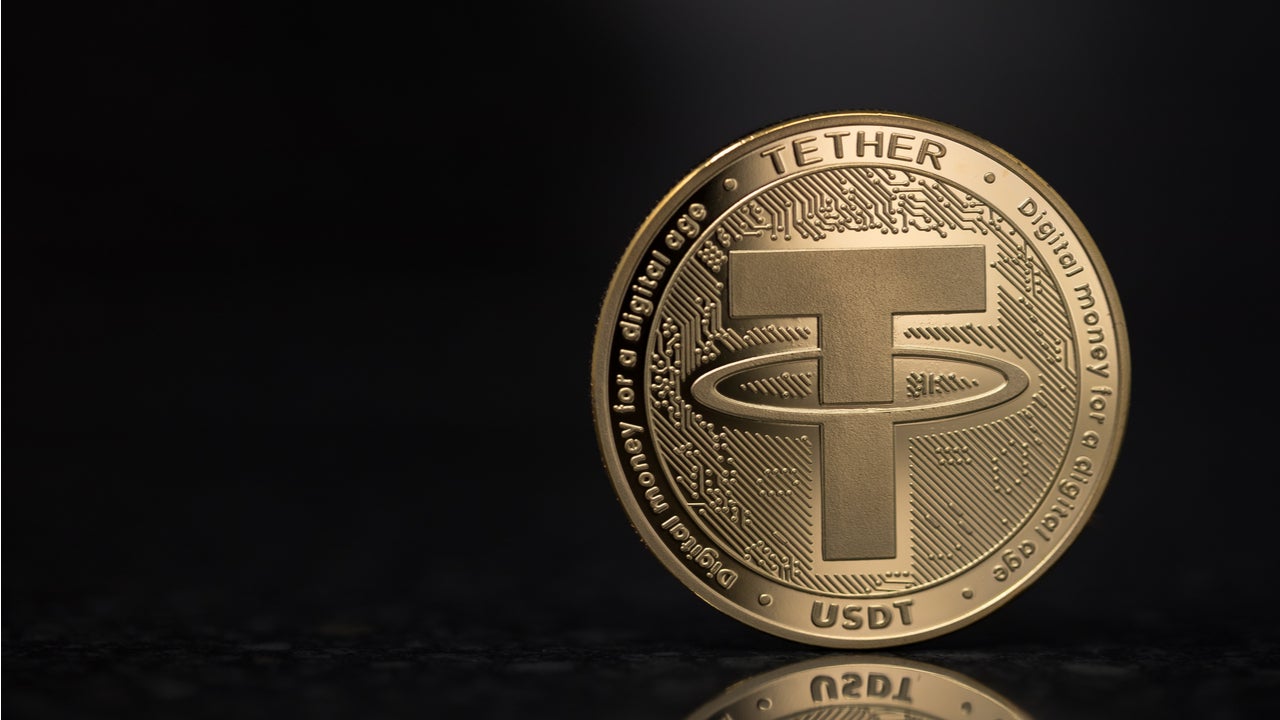
A US regulator has issued a $41m fine against the company behind tether tokens for making “misleading” statements about the so-called stablecoin being fully backed by US dollars.
Tether Limited launched in 2014 with the claim that each tether token, or USDT, is always worth $1.00 because they were backed by the equivalent in fiat currency in Tether’s reserves. Tether has since scaled back this claim in the face of regulatory scrutiny but continues to call itself a stablecoin.

Access deeper industry intelligence
Experience unmatched clarity with a single platform that combines unique data, AI, and human expertise.
On Friday, the US Commodity Futures Trading Commission (CFTC) said that Tether held enough fiat reserves to “back USDT tokens in circulation for 27.6% of the days in a 26-month sample time period from 2016 through 2018”.
The CFTC also found that Tether failed to complete routine audits. It said that Tether owner Bitfinex moved $382m into a bank account ahead of a predetermined accounting review, giving the impression that it had the funds to back tether tokens.
“This case highlights the expectation of honesty and transparency in the rapidly growing and developing digital assets marketplace,” said acting CFTC chairman Rostin Behnam. “The CFTC will continue to take decisive action to bring to light untrue or misleading statements that impact CFTC jurisdictional markets.”
Tether settled the case without admitting or denying liability.

US Tariffs are shifting - will you react or anticipate?
Don’t let policy changes catch you off guard. Stay proactive with real-time data and expert analysis.
By GlobalDataIn a separate order the CFTC found Bitfinex engaged in “illegal, off-exchange retail commodity transactions in digital assets” and ordered it to pay a $1.5m penalty.
The regulator said Bitfinex failed to register as a futures commission merchant and must now implement measures to prevent “unlawful retail commodity transactions”.
Tether Limited said in response that tether tokens have always been fully backed, but that “reserves were not all in cash and all in a bank account titled in Tether’s name at all times”.
The company added: “This inquiry arose during a markedly different time in our ecosystem, and focused on the same types of challenges that many in our industry faced at the time. As many companies around the world do, Tether agreed to resolve this matter in order to move forward and focus on the future.”
The CFTC’s Tether fine raises further questions about Tether’s stability and its role in the cryptocurrency ecosystem.
In February, the New York Attorney General found that Bitfinex made “false statements” about the backing of tether and that it covered up $850m losses. The attorney general fined Bitfinex and related entities $18.5m and ordered it to cease trading activities in New York.
Tether untethered?
Tether plays a key role in the cryptocurrency market. It’s the fifth-largest cryptocurrency by market capitalisation and its tokens are worth more than $68bn. It represents about half of the total stablecoin market and is easily the leading token in the space.
Most importantly, it acts as an intermediary between fiat currencies and cryptocurrencies. Tether’s fees are smaller than fiat currency and the transaction process is faster. This, combined with tether’s stable price, makes it an attractive way to crystalise cryptocurrency profits while keeping those funds readily available to convert back into cryptocurrency.
“Tether is necessary because cryptocurrencies are still used far more as stores-of-value than as currencies,” explains George Monaghan, an analyst on GlobalData’s thematic research team. “We still buy things with fiat and investors buy cryptocurrency so they can have more fiat – not so they can have more crypto.”
He adds: “It’s an important bridge ‘home’ after you’ve made your winnings on crypto island. Without it, investors may feel stranded and lose confidence.”
Unlike traditional cryptocurrencies, tether is centralised. Tokens are “minted” or “printed” at the whim of Tether Limited, rather than a decentralised mining process.
Some studies have found a positive correlation between tether printing and the price of bitcoin. The concern is that should investors withdraw more USDT than Tether holds in reserve, it would not be able to meet those requests. That could spark a chain reaction in the entire cryptocurrency market, some analysts fear.
Others dispute this claim, while Tether continues to insist that USDT’s are fully backed – just not always with actual money.
Tether has survived a previous fine and says it has changed the way it operates compared to 2018. But the company hasn’t been able to shake off concerns about the way it is run.
Securities and Exchange Commissioner chair Gary Gensler recently called for greater oversight of cryptocurrency markets and described stablecoins as “acting almost like poker chips at the casino”.
“Tether not actually being tethered has always been an elephant in the cryptocurrency room,” said Monaghan. “It’s more of a ‘not so stable coin'”.







